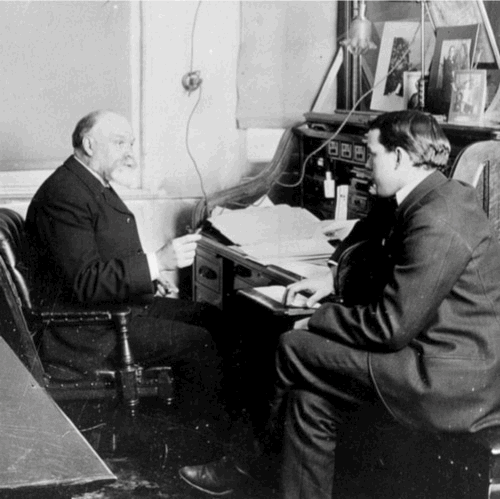
“
Promise them not only bargains, but that every article will be found just what it is guaranteed to be. Use no deception in the smallest degree - nothing you cannot defend before God or Man.
For Canadians of a certain age, the name “Eaton’s” is synonymous with retailing. But the full scope of Timothy Eatons’ legacy lies not just in the department store empire that he founded. Rather, his name and his company hold their place in the Canadian imagination largely thanks to the business practices he invented and perfected, revolutionizing retailing in the process.
Born in Ballymena, Ireland (now Northern Ireland), in March of 1834 not much is known about his early life, other than the fact that his parents, John Eaton and Margaret Craig, were Scottish Protestants. The family emigrated to Canada when Eaton was 20, settling in what was then known as Upper Canada, near London.
His early years in his new home Canada were not the most spectacular. In 1854 he was briefly employed at a haberdashery store in Glen Williams, Ontario and went on to hold a series of odd jobs. In 1856 with the help of his brothers Robert and James, Eaton opened up a bakery shop in the town of Kirkton, Ontario. The bakery quickly failed, but the brothers transformed it into a general store along with a post office, which flourished for the next four years. In 1862 he married Margaret Wilson Beattie in 1862, a woman with whom he would spend his whole life, raising five sons and three daughters.
Sensing opportunity, Eaton eventually moved into the larger town of St.Mary’s, and then, in 1869, Eaton would open another store, a dry-goods and haberdashery business at the now infamous 178 Yonge Street in Toronto. To promote this new business of his, Eaton embraced two business practices that were considered revolutionary to the time. The first was a ban on haggling; all goods at Eaton’s store would have a single price, with no credit given. The second was a promise that all purchases could be returned with a money back guarantee. This second practice would eventually become the store's motto: “Goods Satisfactory or Money Refunded.”
But this was not all of the revolutionary practices Eaton brought to Canadian retailing. In 1884 he introduced the mail-order catalogue, which provided many Canadians, especially those in small towns and rural communities, goods that were previously unobtainable. From clothing, to kitchen gadgetry, to furniture and milking machines, even entire flat-packed homes, the Eaton’s catalogue was instrumental in improving the lives of Canadians living outside its major urban centres, providing them with goods and items that made unbearable winters bearable, filling empty homes with new furniture and drapes, and changing the way of life in Canada’s small towns and rural areas.
Timothy Eaton died in 1907 due to complications from pneumonia, but his legacy would live on well beyond that. His store, consequently named Eaton’s, would become Canada’s largest retail store, and during the Second World War would have more than 70,000 employees Canada-wide in its retail shops and warehouses. Although the chain would eventually close for good in the 1990s due to mismanagement, Eaton’s legacy lives on – the Toronto Eaton Centre is North America’s busiest mall. There are two statues of Timothy Eaton, one at the the Royal Ontario Museum in Toronto, another at the Canada Life Centre, the home of the Winnipeg Jets, where fans will often rub his feet for good luck before the game. His name and company are central to the narrative of Roch Carrier’s beloved children’s book, The Hockey Sweater, and the Santa Claus Parade in Toronto that Eaton founded in 1904 still runs every year.
Timothy Eaton was not the first retailer to implement a money-back guarantee, offer a set price, or even invent the department store and the mail-in catalogue. Yet his adoption of these practices revolutionized Canadian retail, allowing the industry to grow across the country, in every province, city and town, cementing a legacy that lives on, decades after his department store closed its doors.

